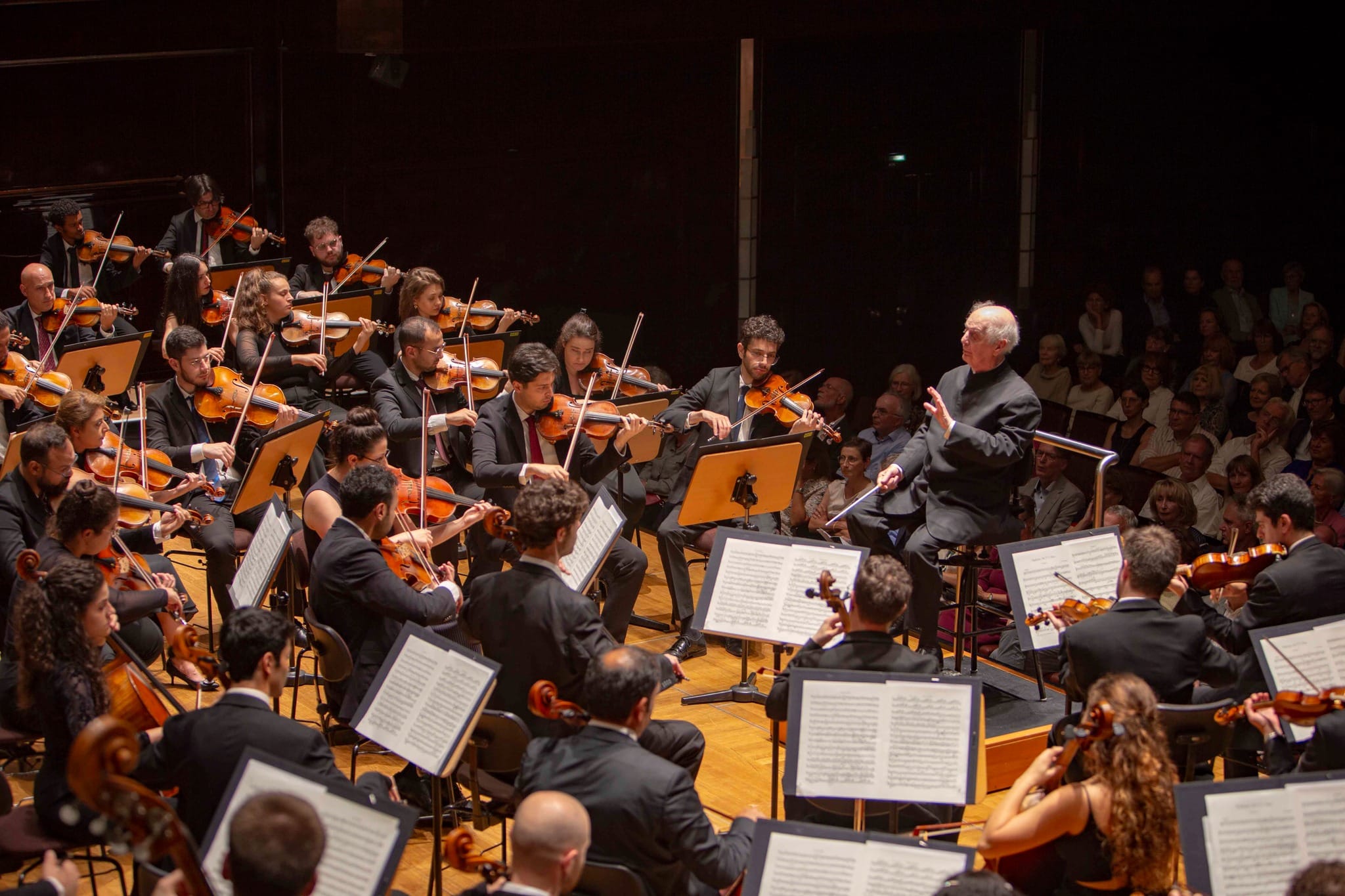The rising toll: This month’s Covid losses
main124 Bulgarian tenor Kamen Tchanev, 56
125 Lee Dykes, music teacher, father of six
126 Sudanese singer Hamad Al-Rayah, 80
127 Russian curator Irina Antonova, 98
128 Bengali sarod maestro Ustad Shahadat Hossain, 62
129 Chicago producer Matthew Agostini, 50
130 Pennsylvania jazzman Russ Neff
131 Yo Yo Ma ensemble player Bassam Saba, 61
132 Amsterdams’ English organist Michael Hedley, 69
133 La Scala soprano Cecilia Fusco
134 Cajun musician Layton Thibodeaux, 66
135 Violinist Camilla Wicks, 92
136 Conductor Petras Bingelis, director of Kaunas State Choir, 78

The previous week’s list is to be found here.
UPDATE:
137 Scottish bassist Ron Matthewson, 76
138 Children’s music and theatre producer Dawn Lindberg
139 Composer Harold Budd, 84
140 UK-based Congolese musician Nzaya Nzayadio, 65
141 Czech composer Vadim Petrov, 84
142 Lutheran Summer Music School chief Peter Wessler, 63
143 Brazilian star Paulinho, 68
144 Country king Charley Pride, 86
145 Washington violist Miriam Gershfeld, 89
146 K T Oslin, Nashville star, 78
147 Chorus singer Mkhululi Peki Mboniswa.
148 Karlheinz Drechsel, Berlin jazz writer, 89
149 Marilyn Belz, founder of Belz school of Jewish music in NY, 91
150 Music teacher Rosemary Collins, 51
151 Organist John Bullough, 91
152 Romanian opera singer Maria Macsim Nicoară, 52
153 Pianist Fou Ts’ong, 86

154 Mexican composer Armando Manzanero, 85





Just AWFUL.
And then, there are still people thinking the pandemic is fake, and people protesting in rallies against any measures, because these ‘threaten freedom’.
I don’t think covid is “fake.” Hundreds of thousands of people protesting outrageous govt “edicts” with little or no evidence are silly I know. Just ask this woman.
https://www.youtube.com/watch?v=olrO0RDu8SY&feature=emb_logo
Freedom, liberty for the individual, those words are so passe, so…well, embarrassing. Power, control over others now that’s something to believe in.
“He suspected he caught the virus at a pharmacy where another customer was coughing and not wearing a mask.”
Selfishness on monumental proportions. Please wear masks when inside. It’s to protect others from you, not vice versa. A simple but misunderstood concept outside of Asia.
Unfortunately, I think it’s understood. At least in the USA. It’s just that anti-maskers don’t care and/or value their “rights” more and/or think the whole thing is fake/a conspiracy. It’s all very depressing.
Lack of concern for others is the inevitable result of the veneration of junk philosophers like Ayn Rand.
I live in Asia. What makes you think they understand that here?
I’ve just done a calculation on US Covid deaths, based on date provided by the Sydney Morning Herald.
Cases: 13,383,320
Deaths: 266,873
That’s slightly less than 2% of the population having died from Covid-19. What percentage of people have died during this same time from other diseases? I’m betting that statistic would be far higher, and in all categories.
From March to May we had a 67% excess deaths in Spain. Hospitals collapsed. Ventilators were not enough. Older people with COVID were not admitted to Intensive care. Our friend Adela, a fine soprano from Galicia, is in intensive care since the first week of November. She’s in her 50s. If that´s not enough for you, then I don’ t know what will be.
How is she and others being treated? That is the great question. Ventilators may not help. High flow nasal cannulas help much more.
https://articles.mercola.com/sites/articles/archive/2020/07/14/ventilators-deadly-for-covid-patients.aspx
Hydroxycholorquine may not work as well for more advanced cases. They probably won’t allow it in Spain. There are different methods worth trying such as ozone injections.
https://clinicaltrials.gov/ct2/show/NCT04400006
I don’t know how things work in Spain but be a pain in the ass to the doctors. Research. Yes, a lot of information is censored but it’s out there. You or someone has to be her advocate.
The second link looks like a study on the effectiveness of ozone therapy to prevent infection, not to deal with it once it’s happened. No results have been posted. So it’s hard to tell for sure what they were trying to accomplish, let alone whether they were successful. All the link says is that the study was performed.
Regarding the first link: to read the article requires joining Dr. Mercola’s site, and I am not prepared to do that today. That said:
Hi-flow cannulas (usually a mask if it’s more than 6L/min) are great for people who can perform the act of breathing and whose lungs are capable of expanding sufficiently. You can just tell the patient “keep taking deep breaths in through your nose and out slowly through pursed lips,” and they’re able to follow your instructions, and their O2 sats come back up. A ventilator might be necessary for someone who is unable to perform that function on their own. I’ve read several reports/ interviews from ICU doctors & nurses describing how someone will show improvement while on a ventilator, but crash again when the medical team tries removing it. Sometimes they do well enough that they are moved out of the ICU to a regular unit, and sometimes they crash so suddenly that they die. Again, I haven’t read Dr. Mercola’s article, but I wonder if rates of ventilator fatality include cases like this — not that the ventilator kills them, but it doesn’t necessarily save them.
“… not that the ventilator kills them, but it doesn’t necessarily save them.”
Until some serious study is done, this is not an unreasonable starting point because the patients conditions might have deteriorated so much that ventilator or not they still would have died. On the statistics side, the moral is the same old precaution: correlation is not the same as causation.
A serious study could perhaps look crudely like the following:
divide the group of patients that seem to need ventilators into two groups. One is given the ventilator and one not, and compare the survival ratio. I can think of ways to refine this to a “double-blind” test. But … apart from the ethical problem of who decides to whom the ventilators are given, there is the statistical requirement that degree of affliction among the patients in the group are more or less equivalent, otherwise one gets a result that is biased.
By the way, Mercola is an osteopath. Yes, right, ….. the person to see when you have tuberculosis
https://www.henryford.com/news/2020/07/hydro-treatment-study
https://www.sciencedirect.com/science/article/pii/S0924857920304258?fbclid=IwAR2ThVW8heoWpjCJNALqNZOklRcDarS9csetteKE_jpT8U0l3-SH6IeJDHg
And let’s not forget Ivermectin.
https://ivmmeta.com/
A letter to the NIH from Senate after Dr.Kory’s testimony on Ivermectin. It’s signed by 2 Republican Senators so for a lot of you they’re automatically assumed to be bad people:)
https://www.hsgac.senate.gov/imo/media/doc/40-317_Comm.%20Homeland%20Security%20%20Gov.%20Affairs%2012-10-2020.pdf
Interview with Dr. Pierre Kory on Ivermectin. It’s right after his testimony in the Senate. It’s on Fox so it must be bad.
https://duckduckgo.com/?q=doctor+kory+testimony+on+ivermectin&iax=videos&ia=videos&iai=https%3A%2F%2Fwww.youtube.com%2Fwatch%3Fv%3DfSL7sqOudoE
https://covid19criticalcare.com/
One has to ask, why are the NIH, FDA and CDC basically ignoring all this?
Don’t forget some doctors and scientists are people who are politically and financially driven also.
Hydroxychlorquine does not work.
Please stop repeating what you now know to be lies, because you have been informed that they are.
You are not calling me a liar. You’re calling hundreds of renowned and respected scientists and doctors liars. Thanks for your special insight.
Another new promising Ivermectin meta-analysis by Dr. Andrew Hill of University of Liverpool. Quite the liar…
https://www.youtube.com/watch?v=yOAh7GtvcOs&feature=emb_logo
N.B. I just noticed that your message was posted December 6th, not today.
So, I want to take back the part of what I wrote in my previous message today about the timeline aspect of your message.
That said, Hydroxycholorquine still does not work, and the other links remain suspect.
Why make any bet? If you have the gumption to look into excess death, the numbers are available in many sources, for example from John Hopkin, or mentioned by Patricia. This is the kind of statistics that is the bread and butter of the epidemiologists, called the signal to noise ratio.
A serious statistician would ask, for example, what the total number of cases is based on like the way it is broken down in Keith Burns note. What’s more, one can’t take the baseline number from this year, but take the average from the past 3 or 5 years. One can’t airily “bet” on a presumed result based on nothing.
Further, it is well established that Covid-19 affects/weakens other organs. The diabetics and heart patients may well survived a good number of years if not for the Covid-19 affliction.
I have not come across statements from trustworthy epidemiology groups that do not support the thesis that says Covid-19 are causing significant excess death.
Here are some numbers for 2018 from the Center for Disease Control.
Total deaths: 2,839,205
Number of deaths for leading causes of death:
Heart disease: 655,381
Cancer: 599,274
Accidents (unintentional injuries): 167,127
Chronic lower respiratory diseases: 159,486
Stroke (cerebrovascular diseases): 147,810
Alzheimer’s disease: 122,019
Diabetes: 84,946
Influenza and Pneumonia: 59,120
Nephritis, nephrotic syndrome and nephrosis: 51,386
Intentional self-harm (suicide): 48,344
Excess deaths is the more reliable barometer here, and will give you a sense of why these extraordinary measures are being taken. With the exception of countries with prior experience (SARS, MERS ) the response is unlikely to be judged to be anywhere near to perfect, but to just let it rip through the population isn’t an option.
“but to just let it rip through the population isn’t an option.”
Sure it is! And America is leading the way!
/eyeroll
So in the space of less than a year, deaths from COVID have killed over half as many as cancer (which is rampant in the USA) and almost twice as many as accidents. It’s also five times as deadly as the standard influenza/pneumonia. Sobering.
We have less deaths from cancer, heart disease, flu, etc. this year. Fancy that…
Since this thread seems to have been resurrected for the end of the year, I’ll just add something that I’ve thought of when I’ve checked back here periodically:
Keith lists the numbers of deaths from all these various causes, but we should also keep in mind (the way we should with COVID) the number of people who are disabled long-term or permanently by them.
Lots of people with heart disease, cancer, stroke, diabetes, kidney disease, lung disease etc. are still alive but unable to work. I don’t have the numbers at hand for how much money these folks cost the US government — both in terms of disability payments to support them, and in terms of lost wages that they could have been earning if they were healthy — but it’s a lot. The impact on the economy is not negligible. We will need to add COVID survivors to that. We know there are short- and long-term effects (meaning more than 6 months); some disability will possibly permanent for all we know at this point.
Programs to train and pay people for being full-time caregivers for family members are just beginning to be common in the US; I think in parts of the country, someone who gives up their job to take care of a parent or grandparent still has to go on welfare. So it’s not only the person but their caregiver who may become a statistic.
As far as programs in the US to pay family caregivers are concerned–it did not work too well when it was tried in the 1970s in New York City. There may be better supervision by social service and health agencies of the caregivers now. However, I have neighbors who are part of this program. The caregiver is not caring for his relative on a full time basis as he is supposed to be doing.
This week, COVID became the #1 killer in the U.S. in deaths per day; until then, heart disease had been #1. The issue is that COVID is a transmissible disease, unlike high cholesterol, etc., and that preventive measures, while not 100% effective, could greatly decrease the death rate, even as we await vaccines and more effective therapeutics.
Actually, the cumulative COVID deaths through this evening total 0.09% of the U.S. population, so far, not 2%. Don’t be alarmist! 😉
It is not just the death rate. It is also the speed in which people end up seriously ill in hospital, filling up beds and intensive care wards, being seriously infectious and spreading covid to docrors, nurses and hospital workers, so that the hospitals become understaffed as capacity fills up. Then ill people with all sorts if ailments are not able to be looked after properly and many more people die.
This.
In addition, many people are experiencing life-altering long-term and possibly permanent damage to their bodies. For example, one of the two people I know who weren’t killed by COVID, is still suffering aftereffects of the disease over six months later. These include impaired breathing, which is bad enough in a random person but is especially bad for a professional wind player.
“That’s slightly less than 2% of the population having died from Covid-19. ”
A clarification: that number is actually slightly less than 2% of the INFECTED population. 2% of the US population would be over 6 million people.
Her mathematics is as accurate as the rest of her thinking.
This is a list of fatality rate of infections diseases. COVID-19 is not among the top ten. But when you find it on the list, try to assess the likelihood you catch the diseases above COVID. That shall explain it to you.
https://www.webmd.com/lung/news/20201217/covid-19-ranks-as-a-leading-cause-of-death-inus
but keep trying, Comrade “Sue” – you might still get them to kill themselvesin Eirope, too.
Another way to look at COVID deaths in the US: one out of every one thousand people in the US have currently died of COVID.
I think there’s a tendency to focus on death rates as if that’s the only thing that matters: either you die, or you’re fine. For a lot of people that’s true: miss a week or two of work, and then life goes on. But.
My second career (well, my only career at the moment) is as a physical therapist assistant in a hospital. I don’t work directly with COVID patients (I’m in a high-risk group), but I do work pretty often with patients who are recovering from it — i.e., no longer positive but still dealing with the after-effects — and I can say that, for people who get sick enough to need hospitalization, the recovery process can be a lot longer and more difficult.
Normally if we have someone hospitalized for flu or pneumonia, they can pretty much go home again, or at least to a rehab facility, as soon as their symptoms are under control. It’s like a normal case of flu or whatever, but multiplied — an intensified version of “lie on the couch for a few days feeling terrible, then spend a few more days regaining your strength, and pretty soon you are back to normal.”
COVID patients often have to stay in the hospital for several weeks after they no longer test positive for the virus. Their lungs are still too weak and they have to stay on a lot of oxygen, and/or their kidney function is severely impaired and they have to be on (hopefully temporary) dialysis, sometimes every day, to filter toxins out of their blood, and/or they keep getting blood clots and have to receive IV anticoagulants on a regular basis; and always, they are weak from spending an extended time unable to get out of bed. I worked several times with one woman who had not only been in the ICU for several weeks but had to be in restraints most of that time because she kept pulling out her IV tubes and her tracheotomy tube. If she even remembers that time, it must seem like a long nightmare (ICU-related PTSD is a real thing, by the way). When I worked with her, she was only — only — on 10 liters of oxygen, still breathing through a trach tube and thus unable to speak, and too weak to sit up by herself. Also she was pregnant (the baby was doing fine). Eventually, once her mentation improved to where she could understand what was going on and cooperate with us, we were able to get her up and walking in the hall with a team of — well, let’s see: there was me, managing the walker and helping her shift her weight and move her legs; someone pushing the IV pole; someone pushing the oxygen machine (bigger than just a regular tank on a handcart); and someone pushing a wheelchair for when (not if) exhaustion suddenly hit and she couldn’t make it back to her room under her own power. So that was four of us. While it was great to watch her improve, and wonderful to see her face light up when she showed me the sonogram of her healthy baby, it was also quite sobering to see how long and difficult the recovery process was for her.
Another guy was much less dramatic than that: he was just weak from spending a month in bed in the ICU. He’d been out of the ICU for a couple of weeks I think, but they were still having to use a Hoyer lift to get him from bed into the recliner where he could at least sit up for awhile. He was “only” on 4 liters of oxygen, but his O2 sats would drop with any kind of effort or activity. We progressed him over the course of a few days from just standing up out of the chair, to marching in place a little, to walking a few feet between the bed and the chair, to walking longer distances like to the door of his room and back (about 25 feet). As soon as he was able to walk about 40 feet and use the bathroom by himself without risking life & limb, they were able to send him home with his wife (who was planning to help him dress and shower).
So that was fine. But who knows how long it was going to take these people to get back to normal, or how long it would be before their spouses could go back to work and leave them safely at home on their own all day.
I’m not going to make claims about long-term disability, since the virus hasn’t been around long enough to see how people are doing years from now; but one point of all the masking and quarantining is not only to save people from possible death, but to save them from a possible long, drawn-out hospital ordeal.
Proof please.
You have described people admitted to ICU at late stages of covid19. When were they diagnosed? If diagnosed earlier, how were they treated?
This is anecdotal, just my experience from where I work; not claiming otherwise.
Sorry about that. my mistake…
Ah yes: Petras Bingelis
I remember him.
I was freshly dead myself, in Heaven, and thought I’d have some rest finally.
BUT!
Life has many many strange turns.
His other half having gone to school with a son of mine heard about this (our deaths) and in contemplating what to do, being that children are so pure in heart, thought about (I mean SERIOUSLY) thought about committing suicide. Somehow Petras and me got her to go to church, instead.
Then she reincarnated, her mother (not knowing it would be a man (=, or wait YES she did), the mother in getting “him” put under a religious privilege speaking to the honorific person about this and taking one look at him, having already had it in her head that he would be called “baptist” instead gave him: “Awn’rEEEEEE Wahdsw” excuse me now I have to go to Germany…